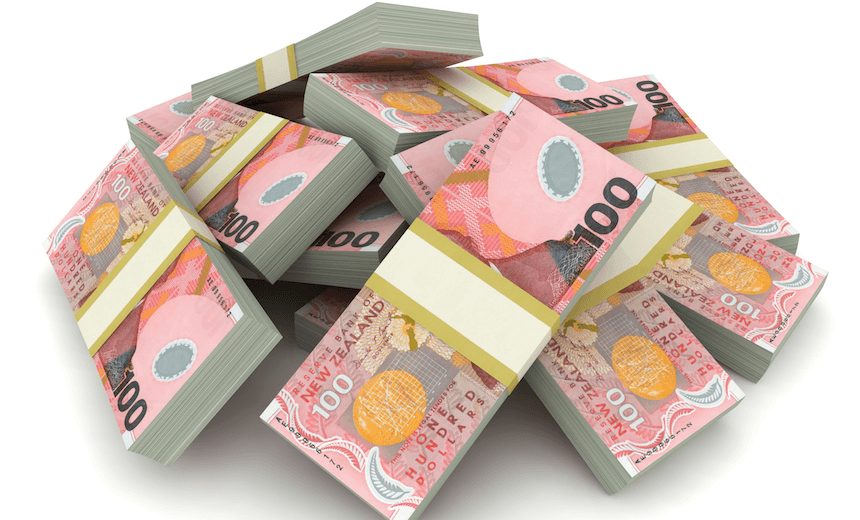Investors are increasingly taking more power over how and what their KiwiSaver funds are doing. Today, the Financial Markets Authority’s Paul Gregory introduces their KiwiSaver Tracker, which gives investors a clearer picture of what providers are really offering.
At 25 years old, 65 can seem like a lifetime away – why save when you can spend now? So getting people, especially younger people, excited and engaged about their retirement savings is hard. But if you don’t sit up and take notice about how you’re investing and what it costs you’ll feel the effects of that apathy further down the track – just when you need those savings.
Over the last year, KiwiSaver’s sleeping giant, its investors, has become more alert about what’s going on inside their funds. They have been stirred by vocal, new lower-cost market entrants. They have reacted with shock to media revelations of the activities of some of the companies in their KiwiSaver funds.
A light has been shone on KiwiSaver’s inner workings and it’s just the start. Next year, policy changes will require fees to be disclosed in dollars. The industry could be shaken further by the advent of robo-advice, which is already available elsewhere and has shown itself to be simple, accessible and inexpensive.
When investors start paying attention, so does the industry. If providers think investors have, or are getting close to having, enough information and motivation to do something, that’s when they act. They prefer to soothe the horse than run after it with a carrot.
That was the case with those controversial investment holdings. There was a spectacular amount of media profile, some complaint and very little actual investor movement. But providers acted anyway. They changed their strategies, their investment managers, their philosophies about investing. None of that is trivial and none of it was for free. It was one of the largest and most rapid industry-wide transitions to a responsible investment approach ever seen in the world.
That’s what well-timed, useful information does.
The FMA’s KiwiSaver Tracker tool
The FMA‘s KiwiSaver Tracker, launched today, aims to get people talking about how investment risk relates to fees and returns across managed investment funds. It’s a tool to empower the investor in their relationship with their provider. The way that investment returns are displayed in the tracker means you can see the fees as part of your gross return – and find out how much of that return is retained by your manager as a fee. Fund managers often talk or display returns before and after fees as separate numbers, but we show the information combined in one simple chart.
We want investors to look carefully at who is investing and managing their money, and the relative results and costs. We want to encourage providers to use disclosure to help drive good conduct and help investors make more informed decisions. We want the Tracker to help KiwiSaver investors to become more value conscious when they choose a provider to join, or transfer to. Investors can also check any claims providers make in the media or in their advertising against the data in the Tracker.
The Tracker highlights what providers already disclose about risk, fees and returns. It complements other existing independent KiwiSaver analysis tools, such as Sorted’s fund finder.
One of the Tracker’s key features is to plot KiwiSaver fund fees and returns. It lets investors see over a five year return period the link between a higher risk profile and a higher return. However, it also reveals the link between higher fees, and claims of higher returns, is far less obvious (except for a couple of standout funds).
While the information in the KiwiSaver Tracker about fees and return is an important factor in considering your investment, it is not sufficient information to make an investment decision. This is why we encourage investors to talk to their providers and to use the Fund Finder tool to discover further information.
The data the Tracker relies on covers the previous year, and average five-year returns, for each fund invested for at least 12 months*. The Tracker will be updated every three months, based on the information supplied by providers in their quarterly disclosures.
The Tracker is just one way of presenting the raw data we collect from KiwiSaver providers and most other managed funds. The FMA is keen for this data and the Tracker to be used by as many people as possible to look at KiwiSaver – and fund managers in general – from many different angles.
It’s well-timed, useful information about how to get the most out of your Kiwisaver. It allows investors to make informed decisions at 25 that can make a big difference at 65. Use it.
*Includes funds which are not excluded, for example because they are part of a restricted scheme.
Check out the FMA’s KiwiSaver Tracker here.
** The tracker tool is optimised for PCs and laptops viewed on Chrome or Internet Explorer, and you can view on tablets too. But it’s not compatible for mobile browsing at the moment. You can get a better view by clicking the ‘full screen’ icon.
This content is brought to you by the Financial Markets Authority.
The FMA’s raw KiwiSaver data is available here. The Tracker has been designed to enable users to embed it within their own website. Just look for the ‘share’ icon and follow instructions (you might need to create an account and login, but it’s free).

